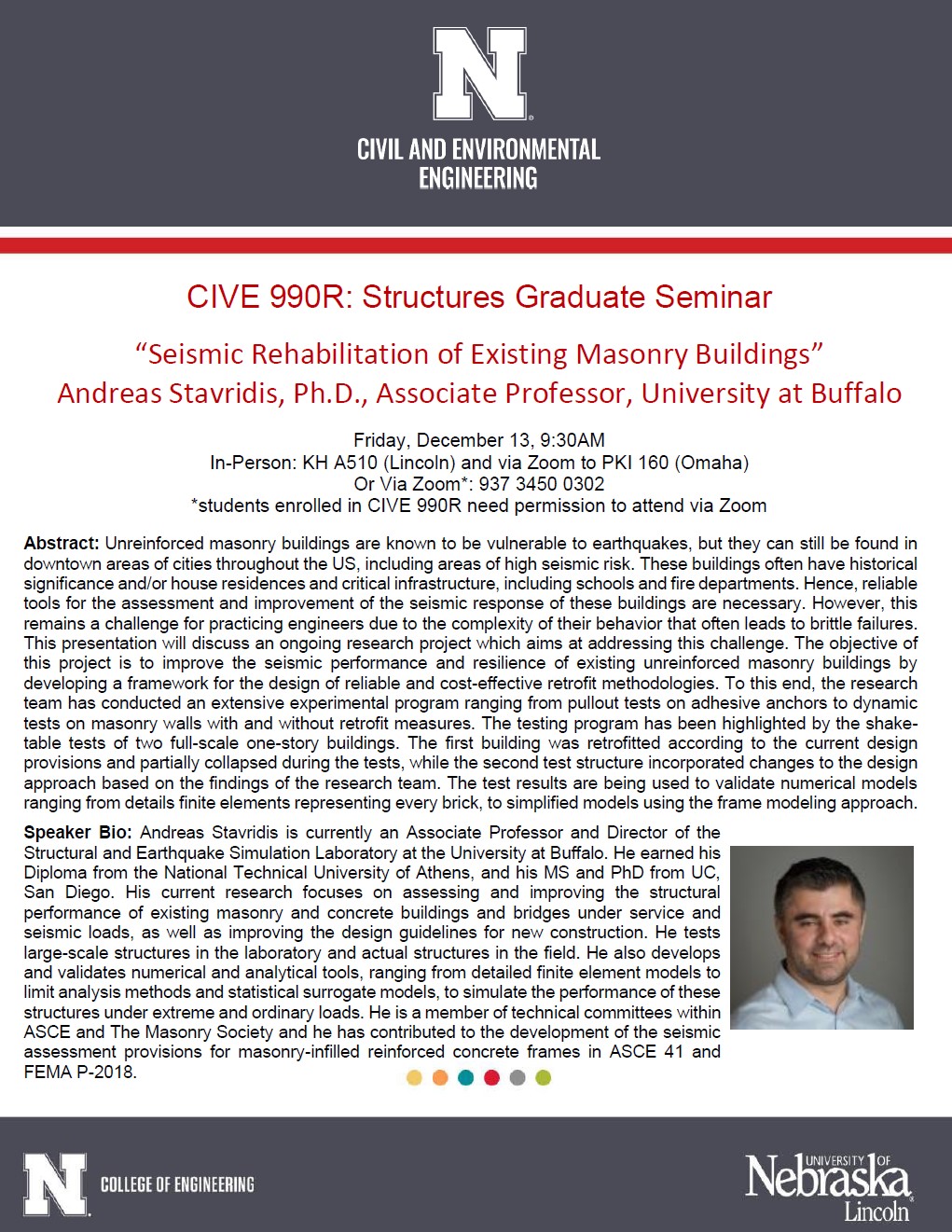
Who: Andreas Stavridis, Associate Professor, University at Buffalo
When: Friday December 13, 9:30-10:30AM
Where: PKI 160, KH A510, Zoom: 9373 450 0302
Title: Seismic Rehabilitation of Existing Masonry Buildings
Abstract: Unreinforced masonry buildings are known to be vulnerable to earthquakes, but they can still be found in downtown areas of cities throughout the US, including areas of high seismic risk. These buildings often have historical significance and/or house residences and critical infrastructure, including schools and fire departments. Hence, reliable tools for the assessment and improvement of the seismic response of these buildings are necessary. However, this remains a challenge for practicing engineers due to the complexity of their behavior that often leads to brittle failures. This presentation will discuss an ongoing research project which aims at addressing this challenge. The objective of this project is to improve the seismic performance and resilience of existing unreinforced masonry buildings by developing a framework for the design of reliable and cost-effective retrofit methodologies. To this end, the research team has conducted an extensive experimental program ranging from pullout tests on adhesive anchors to dynamic tests on masonry walls with and without retrofit measures. The testing program has been highlighted by the shake-table tests of two full-scale one-story buildings. The first building was retrofitted according to the current design provisions and partially collapsed during the tests, while the second test structure incorporated changes to the design approach based on the findings of the research team. The test results are being used to validate numerical models ranging from details finite elements representing every brick, to simplified models using the frame modeling approach.
Speaker Bio: Andreas Stavridis is currently an Associate Professor and Director of the Structural and Earthquake Simulation Laboratory at the University at Buffalo. He earned his Diploma from the National Technical University of Athens, and his MS and PhD from UC, San Diego. His current research focuses on assessing and improving the structural performance of existing masonry and concrete buildings and bridges under service and seismic loads, as well as improving the design guidelines for new construction. He tests large-scale structures in the laboratory and actual structures in the field. He also develops and validates numerical and analytical tools, ranging from detailed finite element models to limit analysis methods and statistical surrogate models, to simulate the performance of these structures under extreme and ordinary loads. He is a member of technical committees within ASCE and The Masonry Society and he has contributed to the development of the seismic assessment provisions for masonry-infilled reinforced concrete frames in ASCE 41 and FEMA P-2018.